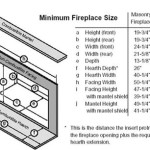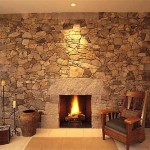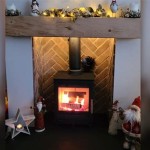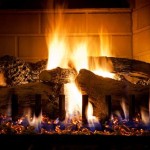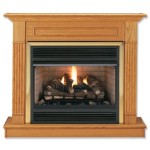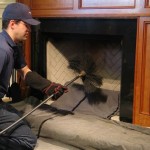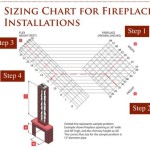Gas Fireplace Hook Up: A Comprehensive Guide
A gas fireplace offers a convenient and aesthetically pleasing alternative to traditional wood-burning fireplaces. They provide warmth and ambiance with the flick of a switch, eliminating the need for wood storage and the mess associated with ashes. However, the installation, often referred to as a gas fireplace hook up, requires careful planning and adherence to safety regulations. This article provides a detailed overview of the process, highlighting key factors to consider before, during, and after the installation.
Before embarking on a gas fireplace hook up, a thorough assessment of the existing structure and the type of gas fireplace desired is crucial. Different types of gas fireplaces necessitate varying installation requirements. For example, a direct vent fireplace, which draws air from outside and vents directly outside, will require a different venting system than a vent-free fireplace, which uses room air for combustion and releases combustion byproducts into the room. Understanding these differences is paramount for ensuring safe and efficient operation.
Choosing the appropriate location for the gas fireplace is another critical aspect of the planning phase. Proximity to an existing gas line is a significant factor, as extending gas lines can add to the overall cost and complexity of the project. Furthermore, the fireplace should be placed in a well-ventilated area, especially if considering a vent-free model. Local building codes and regulations should be consulted to ensure compliance with safety standards regarding clearances from combustible materials and venting requirements.
Planning and Preparation: Essential First Steps
The initial stage of any gas fireplace hook up involves meticulous planning and preparation. This includes obtaining the necessary permits, selecting the appropriate type of gas fireplace, and assessing the existing infrastructure. Failure to adequately prepare can lead to costly delays and potentially dangerous outcomes.
Securing the required permits from local authorities is a non-negotiable step. These permits ensure that the installation meets all applicable building codes and safety standards. The specific permits required will vary depending on the location and the scope of the project. Contacting the local building department is essential to determine the exact requirements and to obtain the necessary paperwork. Attempting to install a gas fireplace without the proper permits can result in fines, legal action, and the potential for significant safety hazards.
The choice of gas fireplace directly impacts the installation process. Direct vent fireplaces, as mentioned previously, require a venting system that runs directly to the outside. This type of fireplace is generally considered safer and more efficient than vent-free models. Vent-free fireplaces, while easier to install, release combustion byproducts into the room, which can pose health risks if not properly ventilated. B-vent fireplaces utilize existing chimneys for venting, but require careful inspection to ensure the chimney is in good working order and properly sized for the fireplace.
Before installation begins, a thorough inspection of the existing gas line is necessary. This should be performed by a qualified gas technician to ensure the line is in good condition, properly sized for the new fireplace, and capable of delivering the required gas pressure. If the existing gas line is inadequate, it may need to be upgraded or a new line may need to be installed. Ignoring this step can lead to insufficient gas supply, resulting in poor fireplace performance or even dangerous gas leaks.
Gathering the necessary tools and materials is another crucial aspect of the preparation phase. This includes pipe wrenches, Teflon tape, pipe sealant, a level, a drill, and appropriate venting materials. Having all the necessary tools and materials on hand will streamline the installation process and minimize delays. It is also important to have a carbon monoxide detector installed and tested to ensure proper operation after the fireplace is installed.
The Installation Process: A Step-by-Step Guide
The actual installation of the gas fireplace requires careful attention to detail and adherence to manufacturer instructions. This section outlines the general steps involved in installing a gas fireplace, although specific procedures may vary depending on the model and the installation environment. Disconnecting the gas supply is the first and arguably most important step. This should be done at the main gas meter to ensure no gas is flowing to the fireplace during the installation process. Using a pipe wrench, carefully tighten the valve to shut off the gas supply. It is highly recommended to have a qualified gas technician perform this step.
Next, prepare the fireplace opening. This may involve removing an existing wood-burning fireplace insert or constructing a new firebox according to the manufacturer's specifications. Ensure the opening is properly sized and that the surrounding area is protected from heat and sparks. Proper preparation of the fireplace opening is essential for ensuring a secure and aesthetically pleasing installation.
Install the venting system according to the manufacturer's instructions. For direct vent fireplaces, this involves connecting the vent pipes to the fireplace and running them through an exterior wall or roof. Ensure all connections are properly sealed to prevent leaks. For B-vent fireplaces, inspect the existing chimney for any damage or obstructions. Have the chimney cleaned and inspected by a qualified professional if necessary.
Connect the gas line to the fireplace. This step requires careful attention to detail and the use of appropriate pipe sealant and Teflon tape. Ensure all connections are tight and leak-free. A gas leak detector should be used to verify the integrity of the connections after the gas supply is turned back on.
Install the fireplace insert into the prepared opening. Secure the fireplace insert according to the manufacturer's instructions. Ensure the fireplace is level and properly aligned. Connect any electrical wiring required for the fireplace, such as for the blower or ignition system. Follow all applicable electrical codes and safety standards.
Test the fireplace to ensure proper operation. Turn on the gas supply at the main meter. Test all connections for leaks using a gas leak detector. Light the pilot light according to the manufacturer's instructions. Observe the flame pattern to ensure it is burning correctly. Test all features of the fireplace, such as the blower, thermostat, and remote control.
Safety Considerations and Post-Installation Procedures
Safety is paramount throughout the gas fireplace hook up process. Adhering to safety guidelines and conducting thorough post-installation checks are crucial for preventing accidents and ensuring the long-term safe operation of the fireplace. Never attempt to install a gas fireplace without proper training and experience. If you are not comfortable working with gas lines, hire a qualified gas technician to perform the installation.
Always turn off the gas supply before working on the fireplace. This will prevent accidental gas leaks and explosions. Use a gas leak detector to check for leaks after making any connections. Never use an open flame to check for gas leaks. Ensure the area is well-ventilated during the installation process. This will help to prevent the build-up of flammable gas fumes.
Install a carbon monoxide detector near the fireplace. Carbon monoxide is a colorless, odorless gas that can be deadly. A carbon monoxide detector will alert you to the presence of carbon monoxide in your home. Test the carbon monoxide detector regularly to ensure it is functioning properly.
After the installation is complete, conduct a thorough inspection of the fireplace and the surrounding area. Check for any signs of leaks, damage, or improper installation. Ensure all venting connections are secure and leak-free. Verify that the fireplace is properly grounded according to electrical codes.
Educate yourself and other household members on the safe operation of the gas fireplace. Read the manufacturer's instructions carefully and understand how to operate the fireplace properly. Teach children about the dangers of playing with the fireplace and keep flammable materials away from the area. Schedule regular maintenance checks for the gas fireplace. This will help to ensure that the fireplace is operating safely and efficiently. A qualified gas technician should inspect the fireplace annually to check for any potential problems.
Document the installation process, including any permits obtained, inspections performed, and maintenance records. This documentation can be valuable for future reference and for warranty purposes. Regularly clean the fireplace glass and vents to remove dust and debris. This will help to improve the efficiency of the fireplace and prevent the build-up of flammable materials. By following these safety guidelines and post-installation procedures, you can ensure the safe and enjoyable operation of your gas fireplace for years to come.

How To Select And Install A Gas Fireplace Log Set Fireplaces Direct Learning Center

How To Install A Gas Fireplace Diy Built In

If You Have A Gas Fireplace It May Or Not Chimney Flue

How To Install A Fireplace Insert Diy Save Money

Fireplace Installations Near Dc Chimney Experts

Installing A Gas Fireplace

How To Install Gas Logs 13 Steps With S Wikihow

Fireplace Installation Instructions Diamond Fire Glass

Efficient Prefab Gas Fireplaces Fireplace Showroom In Tilton Nh

How To Install A Gas Fireplace This Old House

